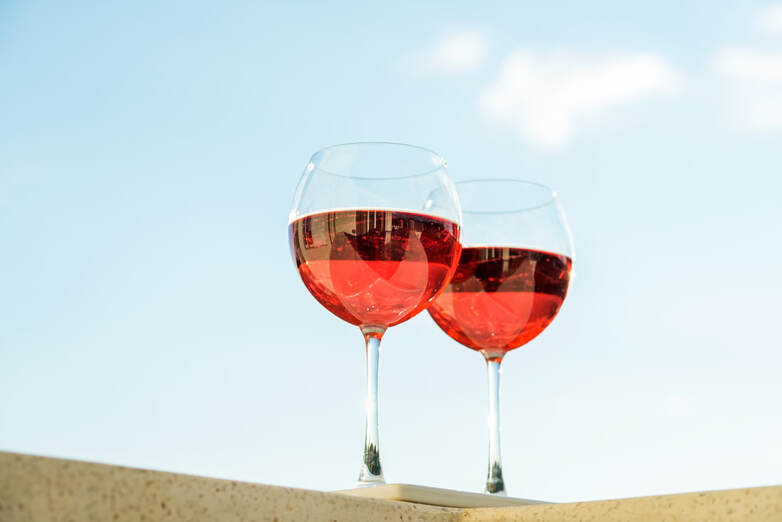|
The saignée method (meaning “bleeding” in French), involves making rosé as a by-product of red wine fermentation, where a portion of the pink juice from the grape must is removed or drained at an early stage, and is then fermented separately to produce rosé.
These wines tend to be a bit darker than regular rosé wines, as the juice can sit on the skins for a few hours or even a few days, increasing the intensity of the color saturation as well as the concentration of flavors and aromas. These are often not wimpy wines, and can be better for late season dishes or fuller-bodied food pairings. This is different from the other methods of rosé production, such as minimal skin contact, direct or short term pressing and of blending. Of the three, minimal skin contact is the most widely used as it allows for the most control. Grapes are crushed to allow the juice to flow and then sit with skins for a very short period of time - usually no more than 2 days. When the juice is ready it is then run from the tank and skins and allowed to ferment. Easy to control and easy to produce in large volumes. Direct or short-term pressing is similar in that the juice is on the skins, but then pressed rather than racked off the skins. This can also produce higher quality wines, but is more variable and less predictable for color. Often used by smaller wineries that like to emphasize vintage variations. Then there is the method of blending red and white wine to make rosé, which is not very favored for making higher quality rose. Because finished wines are blended, the harmony of the blend is not very good, plus it could be difficult to verify origination of the wines. This practice is basically not allowed for quality wines in most of Europe. In fact, the only place in France where blending to create a rose is acceptable is in Champagne - mainly due to the fact that they fraction the press runs so diligently, and the fact that almost all of the wines are blends anyway - this can be controlled and done at a very high level. Rosé Champagne can be exquisite. Saignée is a method that is either considered to be a way to enhance the original wine that it is bled from - by adding concentration through the reduction of liquid volume to the amount of skins in the tank - or a way to get something to drink / sell very close after harvest. By bleeding off 8-10% of your volume on a wine that would otherwise have to wait 1-2 years to age and then sell, you can have a wine to drink very quickly, but more importantly perhaps, to sell very quickly and get some cash. Many wineries now product rosé on a regular basis, where 20 years ago - only a handful really specialized in the category. Thank you Paris Hilton!
0 Comments
Leave a Reply. |
ABOUT THE Author
Brian Mitchell runs The New England Wine Academy, and is responsible for the content of this blog. With 30 years of drinks industry experience, Brian has learned a few things, but everyday he is learning more. This blog helps to bring that knowledge to you. Archives
July 2024
Categories
All
|
Copyright 2018 > 2024 by New England Wine Academy, LLC
we advocate making responsible decisions
we advocate making responsible decisions


 RSS Feed
RSS Feed
